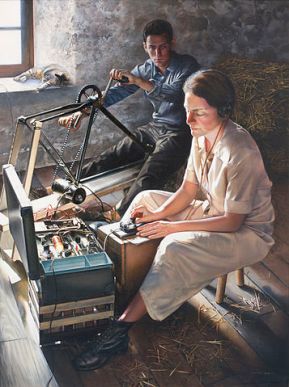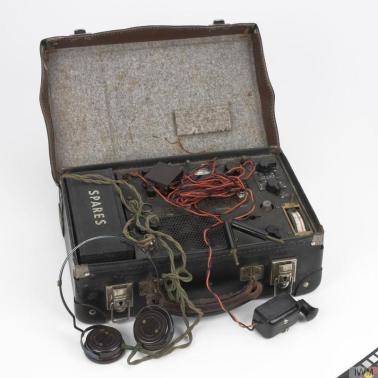Here is a little spy history from Hackaday.com
But it was not just the battlefields of WWII that benefitted from radio technology. From apartments in Berlin to farmhouses in France, covert agents toiled away over sophisticated transceivers, keying in coded messages and listening for instructions. Spy radios were key clandestine assets, both during the war and later during the Cold War.
The Limping Lady

Virginia Hall operating a British B2 spy radio from Vichy France. “Cuthbert” can be seen in the foreground. Source:CIA
Virginia Hall had all the makings of a diplomat. Impeccably educated, fluent in multiple languages, and worldly from her years spent abroad from her native Baltimore, Virginia’s dream of a life in the foreign service was shattered when a hunting accident led to the amputation of her left leg. Attitudes toward disabilities were different in the 1930s, and even fitted with a prosthetic leg (which she named “Cuthbert”) Virginia was deemed unfit for the life of a diplomat.
The outbreak of WWII changed that attitude. Virginia, by then living in France, was well-placed to act as a forward agent for the Allies. Volunteering first for the British Special Operations Executive (SOE), Virginia worked agents, ran safehouses, and reported intelligence from Vichy France. Later, she volunteered with the US Office of Strategic Services (OSS), forerunner to the CIA. Her efforts earned her a place on the Gestapo’s “Most Wanted” list as “The Limping Lady”. She and Cuthbert continued to work against the Nazis right up through the Normandy invasion and liberation and earned a Distinguished Service Cross for her efforts – a rare honor for a civilian, and rarer still for a woman.
Behind Enemy Lines

British Type A Mk II suitcase radio. © IWM (COM 229)
While Virgina was adept in all aspects of tradecraft, one of the most powerful tools at her disposal was thesuitcase radio, a catch-all term used to describe any transceiver small enough to be transported into the field and operated covertly. A suitcase was often used to house the radio as it would be less likely to arouse suspicion if the spy’s lair was discovered. The suitcase was also a great form factor for a portable transceiver – just the right size for the miniaturized radios of the day, good operational ergonomics, and perfect for quick setup and teardown. You can even imagine a spy minimally obfuscating the suitcase’s real purpose with a thin layer of folded clothing packed over the radio.
Great care was given to ensure that the field agent would have every chance of using the radio successfully and that it would operate as long as possible under adverse conditions. With a power budget often limited to five watts or so, these radios were strictly QRP affairs. Almost every suitcase rig operated on the high-frequency bands between 3 MHz and 30 MHz, to take advantage of ionospheric skip and other forms of propagation. An antenna optimized for these bands would likely be a calling card to the enemy, especially in an urban setting, so controls were provided to tune almost any length of wire into a decent antenna.
